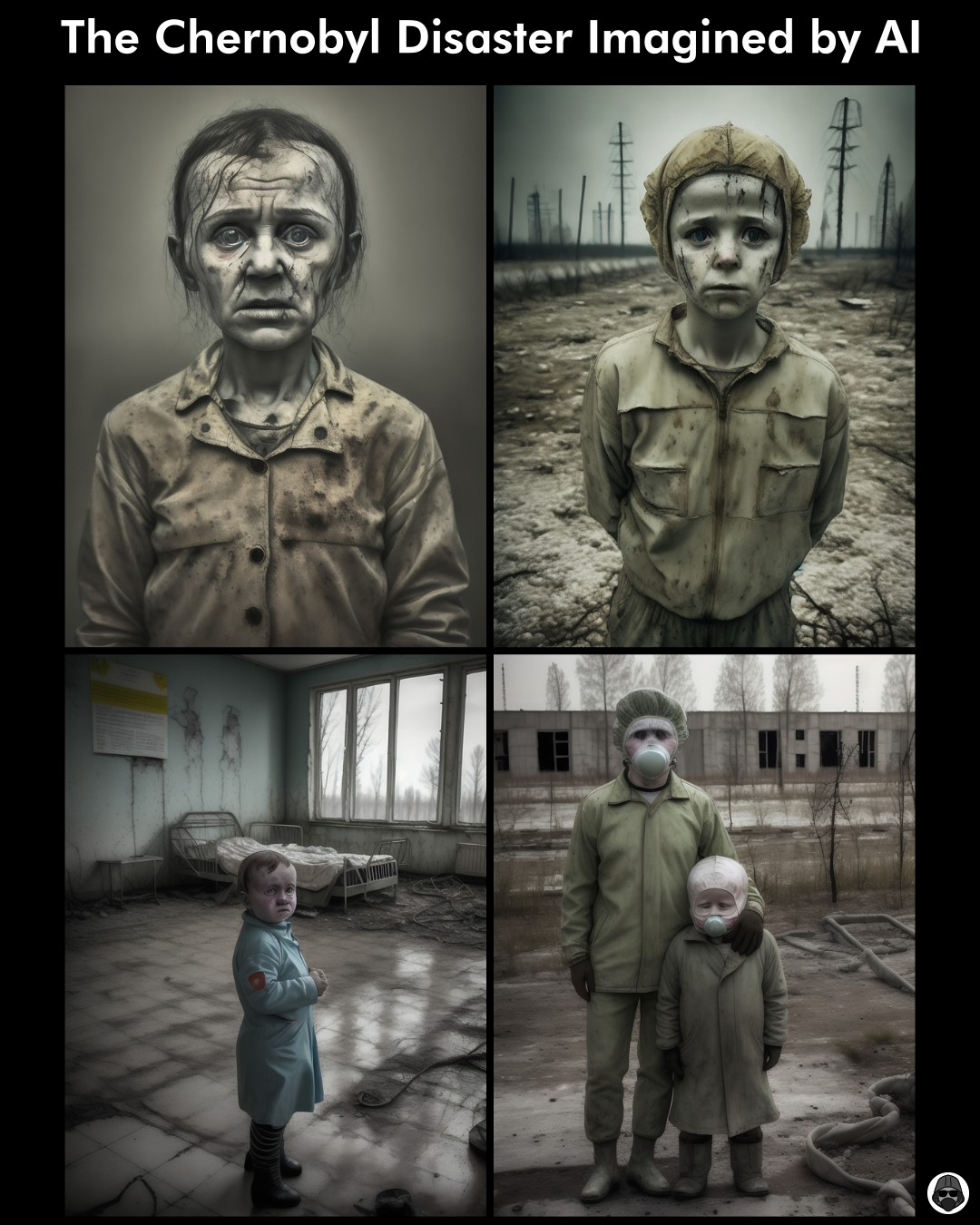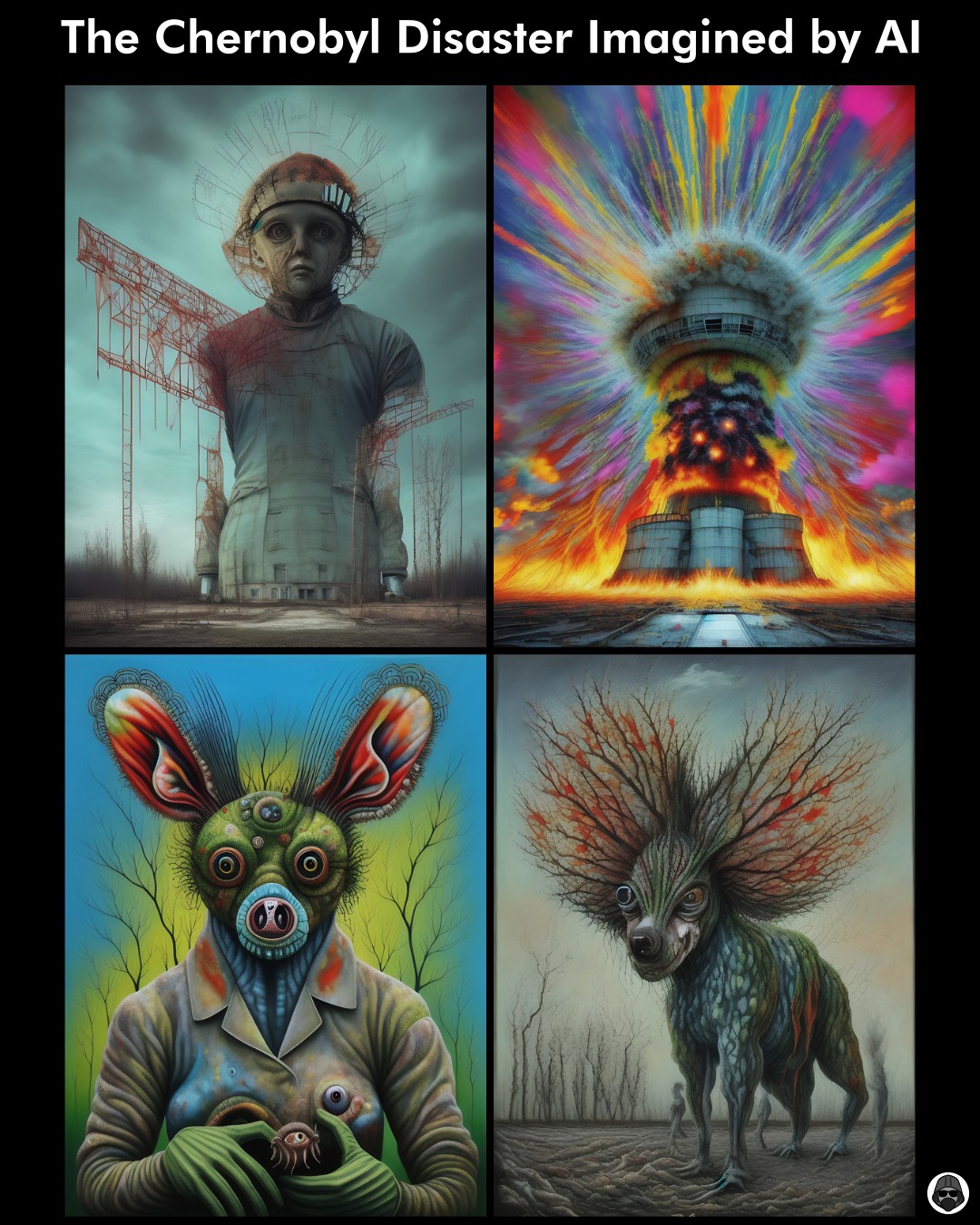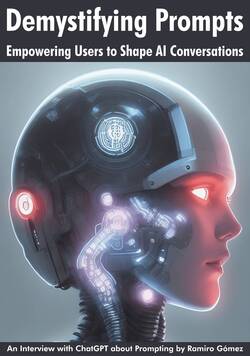The Chernobyl Disaster Imagined by Artificial Intelligence
The Chernobyl disaster was a catastrophic nuclear accident that occurred on April 26, 1986, at the Chernobyl Nuclear Power Plant in Ukraine, then part of the Soviet Union. It was caused by a flawed reactor design and human error during a safety test, resulting in a massive explosion and fire that released radioactive materials into the atmosphere. The disaster led to the deaths of at least 31 people, and the long-term effects of the radiation exposure are still being studied and there are still areas that are too dangerous for people to live in today. The accident is considered the worst nuclear disaster in history.
I clearly remember this terrible accident that happened 37 years ago today and affected millions of people and wanted to see how Artificial Intelligence systems "imagine" a disaster like that. AI has come a long way in recent years, particularly in the field of image generation. With the help of cutting-edge models like the stable diffusion model, it's now possible to create stunningly realistic images based on text prompts. Instead of coming up with prompts related to the Chernobyl disaster myself, I instructed OpenAI's ChatGPT how to create such prompts including stylistic modifiers. I fed the suggested prompts into the InvokeAI stable diffusion toolkit and compiled 100 of the generated images in a book with the title The Chernobyl Disaster Imagined by AI.
Haunting Survivor Portraits
Particularly, the images depicting survivors of the accident are haunting and moving at the same time.

Surreal Art
Thanks to the creativity of these systems several weird and surreal images were generated as well.

All Prompts Used for Images in the Book
Below is a list of all prompts in alphabetical order, that were used to create images that are featured in the book.
- a haunting scene of the abandoned city of pripyat after the chernobyl disaster, with nature slowly reclaiming the area
- an architectural representation of the abandoned buildings and structures in the exclusion zone surrounding the chernobyl nuclear power plant, showcasing the eerie beauty of decay and abandonment
- a nature-inspired representation of the aftermath of the chernobyl disaster, with plants and animals coexisting in a beautiful and fragile ecosystem that is both resilient and fragile
- bleak and stark depiction of the nuclear reactor in ruins, with bold lines and a limited color palette, graphic design
- cubist-inspired representation of the abandoned ghost town of pripyat
- dark and eerie depiction of the abandoned chernobyl power plant
- depiction of the chernobyl disaster with bold and bright colors, capturing the chaotic energy of the event, fauvism
- desolate wasteland of the Chernobyl exclusion zone, abandoned buildings and rusted machinery
- devastating scene of the chernobyl disaster, dark and ominous impressionism
- distorted and abstract interpretation of the aftermath of the chernobyl nuclear disaster
- dramatic painting of the Chernobyl nuclear reactor on fire, with billowing smoke and flames lighting up the night sky
- emotive and somber painting of the victims of the chernobyl disaster
- expressionistic representation of the fear and chaos surrounding the chernobyl accident
- futuristic reimagining of the chernobyl incident through a sci-fi lens
- haunting and emotional depiction of the abandoned city of pripyat, with soft and muted tones, dreamy realism
- haunting depiction of the abandoned city of pripyat, post-apocalyptic surrealism
- haunting digital artwork of the control room at Chernobyl, with flickering screens and eerie green light casting an ominous glow
- haunting portrait of the chernobyl disaster, the human toll, people affected by the radiation, tragedy and loss
- heart-wrenching digital artwork of a deserted playground in Pripyat, with abandoned toys and rides left behind in the aftermath of the disaster
- mournful scene of the chernobyl disaster, with soft and delicate brushstrokes, romanticism
- moving portrait of a Chernobyl survivor, captured in black and white with a solemn expression and haunting eyes
- poignant tribute to the chernobyl disaster victims, a memorial, solemn and respectful, remembrance
- powerful photo of the Chernobyl disaster site, with the twisted metal remains of the reactor surrounded by a stark and desolate landscape
- raw and powerful rendering of the chernobyl disaster, with dark tones and rough textures, expressionism
- raw and powerful rendering of the chernobyl disaster, with dark tones and rough textures, urban realism
- realistic reimagining of the chernobyl control room on the night of the accident
- silent aftermath of the chernobyl disaster, a rusted ferris wheel in an abandoned amusement park
- stunning digital artwork of the Chernobyl power plant, with intricate details of the reactor core and control panels
- surreal and fantastical interpretation of the chernobyl disaster, with dreamlike colors and shapes, surrealism
- surreal artwork depicting the Chernobyl nuclear reactor exploding in a burst of colorful energy and chaos
- surrealistic painting of the mutated animals that now call chernobyl home
- the deserted hallways of pripyat's hospital, ghostly
- The human cost of the Chernobyl disaster, affecting generations to come
- The human toll of Chernobyl, haunting portraits of affected individuals
- tragic scene of the chernobyl disaster, the explosion and fire, devastation and chaos, nuclear catastrophe
- vintage, aged depiction of the abandoned city of pripyat
Conclusion
Overall, this project is a fascinating example of the intersection between artificial intelligence and the arts. It's a testament to the power of AI and the incredible things that can be accomplished when technology and creativity come together. If you're a fan of AI-generated art and appreciate beautiful and thought-provoking imagery, check out The Chernobyl Disaster Imagined by AI.
Featured Merch

Latest Posts
- How Limiting My Internet Usage Changed the Way I Work and Live
- Practical Tips to Reduce Data Usage on Phones, Tablets, and Computers
- Fail2ban Cheat Sheet for Sysadmins
- Build Mental Resilience: A 30-Day Challenge Inspired by Science
- Setting Up Google Drive Backups on Ubuntu with rclone
Featured Book

Subscribe to RSS Feed
Published by Ramiro Gómez on . Subscribe to the Geeksta RSS feed to be informed about new posts.
Tags: nuclear accident chatgpt artificial intelligence picture book llm stable diffusion
Disclosure: External links on this website may contain affiliate IDs, which means that I earn a commission if you make a purchase using these links. This allows me to offer hopefully valuable content for free while keeping this website sustainable. For more information, please see the disclosure section on the about page.



